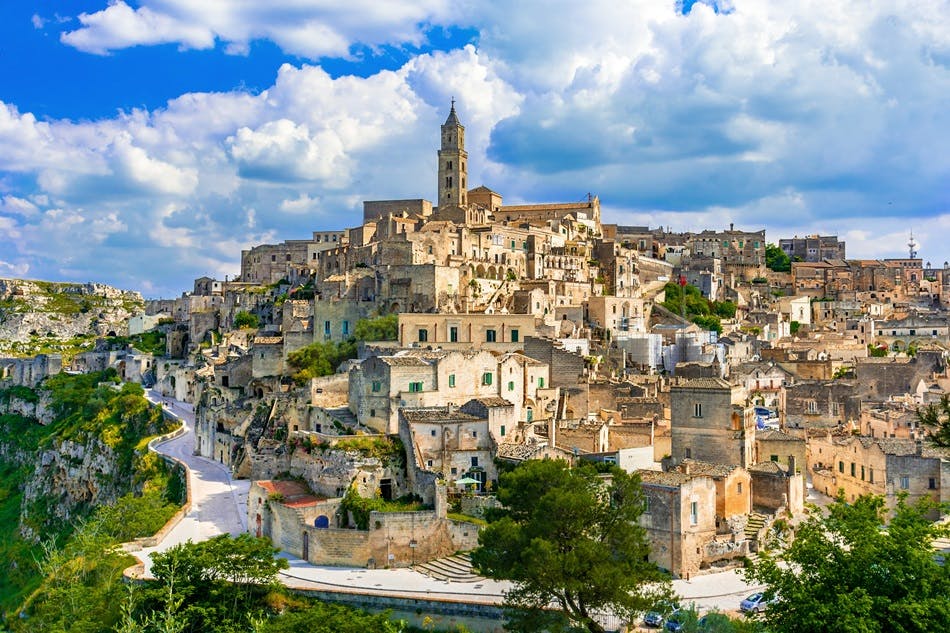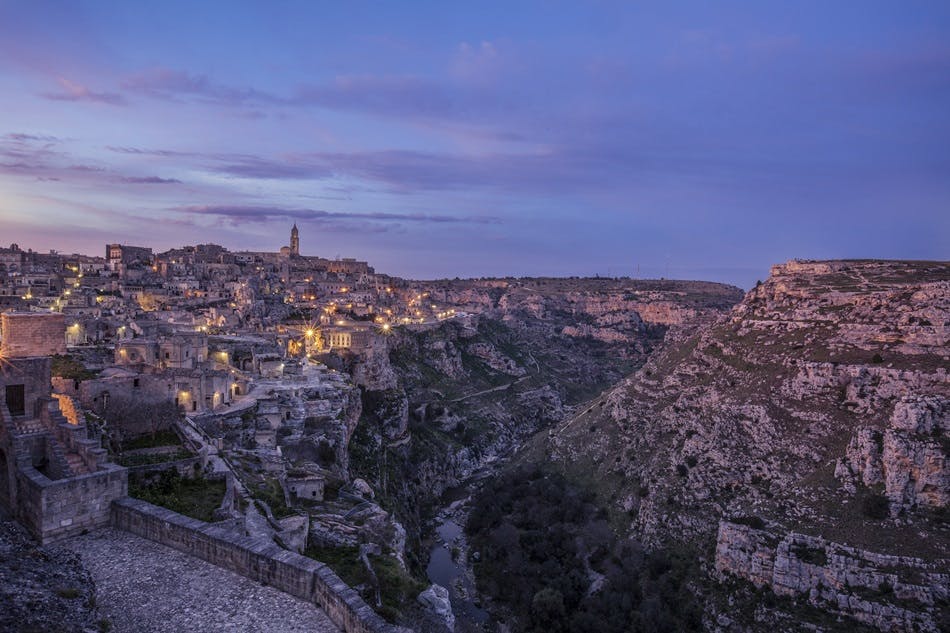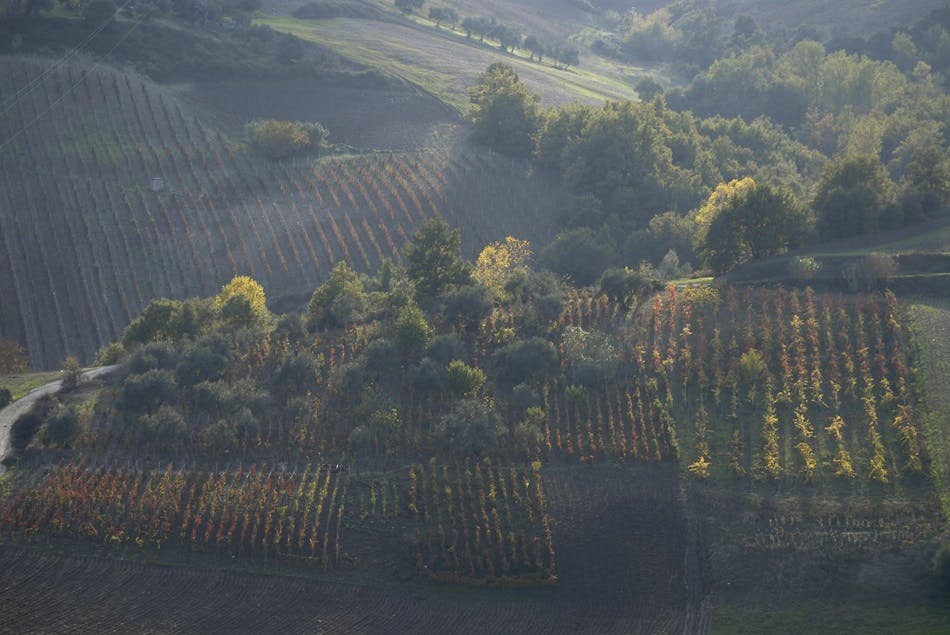Forming the “ankle” of the Italian peninsula’s boot, in the rich variety of landscapes of this region, we find the highest mountains of Mezzogiorno. With 45% of the terrain classified as mountainous and 45% as hills, only 8% is considered “flat”, meaning most of the grapes grown in this area are from dizzying and sunny altitudes. While Regione Basilicata may not be as famous as some other wine-producing regions, recent revolutions in quality have shifted the tide and earned this region a high-quality reputation. Learn about this southern region and its famous designations.

Terrain & Climate
Basilicata is one of the most mountainous and hilly regions in all of Italy. The Apennine Mountains shelter the region from the influence of the Tyrrhenian Sea to the west, where there is the steep coastline of Maratea, literally “the goddess of the sea”. This high-altitude terrain is matched with hot, harsh weather, making vine-growing a challenge. These altitudes (300-500 meters, or 1,000-1650 feet) help mitigate the hot climate. Higher elevations are cooler and have more ventilation, which will help slow down ripening and preserve acidity. The cool breezes coming from the east also help reduce the heat, so the vines can thrive. The intense sun exposure at these heights also forces the grapes to protect themselves from UV radiation in the form of thicker and darker skins. This means wines that are concentrated in color and have bolder tannins.

Areas & Designations
The most famous wine-producing area in this region is Monte Vulture, an extinct local volcano that is home to the only DOCG in the region, Aglianico del Vulture Superiore. Monte Vulture's soils are rich and free-draining. The feature grape in this designation is Aglianico, an indigenous grape mistakenly thought to have been brought over by the ancient Greeks. Thick-skinned and late-ripening, Aglianico thrives in the hot southern Mediterranean climate. These wines are surprisingly high in acid, with bold tannins and intense concentration. Aging helps these rich wines earn their status as one of the greatest southern Italian wines.
Aglianico del Vulture gained DOC status in 1971, and the Superiore style was promoted to DOCG in 2010. There are three other DOC’s in Basilicata: Terre dell’Alta Val d’Agri (est. 2003), Matera (est. 2005), and Grottino di Roccanova (est. 2009). Terre dell’Alta Val d’Agri DOC produces stunning rosso, rosso riserva, and rosato from both indigenous and international varietals. Matera DOC encompasses a wide range of styles, including reds, whites, sparkling, and even dessert wines. This region focuses primarily on indigenous grapes, including Malvasia Bianca, Malvasia Nera, Greco, and Primitivo. The most recent DOC, Grottino di Roccanova, also produces red, white, and rosato wines from primarily Malvasia and Sangiovese.

A surprising deviation from the Aglianico del Vulture DOC still red wine is a 100% Aglianico spumante wine under the same name. Typically made from grapes harvested earlier in the season, these sparkling wines are made in both dry and sweet styles with delicious freshness and acidity. Secondary fermentation happens in the bottle, and the wines must be aged for at least one year before hitting the market.
Another well-loved sipper from Basilicata is Amaro Lucano. This multi-generational family amaro producer has a passion that has lasted for over 130 years. The founder was originally a confectioner with a love for herbology and, after many trials, found the perfect recipe that would become Amaro Lucano. This bittersweet digestivo is made by infusing a spirit in a multi-step process with a secret mix of more than 30 herbs. Its flavor is strong but delicately balanced and is perfect when served neat, with ice, or mixed into a cocktail.
Whether a bold, age-worthy red, a sparkling white, or the perfect digestivo to end the night, the wines and spirits from Regione Basilicata cannot be underestimated.
Project Basilicatë & the Lucanian People
Curious to learn more about the people of this region? You might think their name is related to Basilicata, but they're actually called "Lucanians" after Lucania, the ancient name of this region in Italy. There are strong Lucanian communities outside of the region that have settled around the world, including in New York, Buenos Aires in Argentina, and Montevideo in Uruguay. Project Basilicatë was designed to highlight the unique parts of Lucanian culture and cuisine. If you're in New York, check out Project Basilicata at the J.D. Calandra Italian American Institute from August 22nd to September 30th.
Get to know this mountainous region and these structured wines by stopping by your local Eataly or shopping online today!
